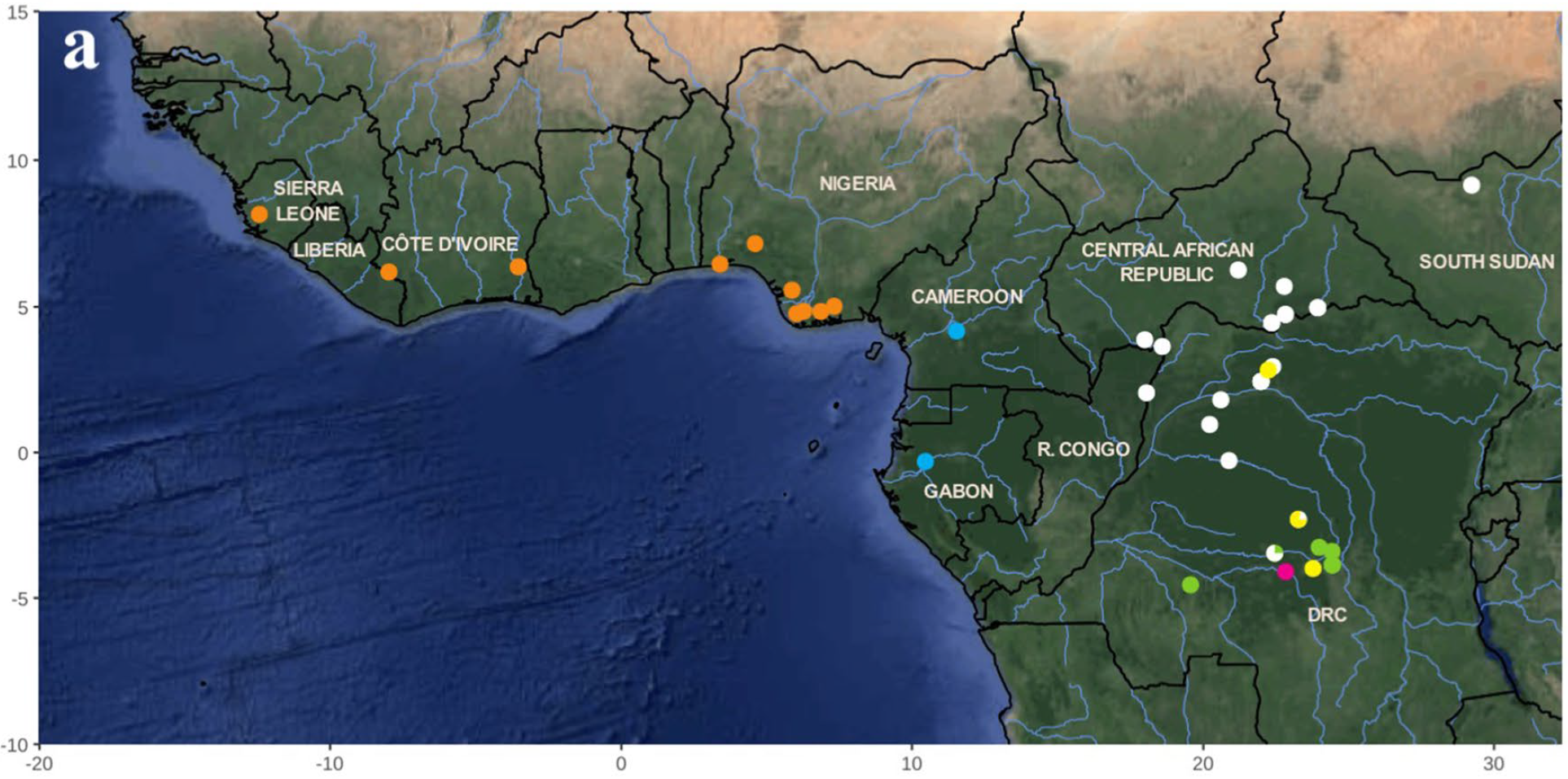Genomic history of human monkey pox infections in the Central African Republic between 2001 and 2018
Update Time:2021-06-28

Geographic origin of the 56 monkeypox virus isolated analysed in this study
Monkeypox, an emerging and neglected infectious disease, which is caused by the MonkeyPox virus (MPXV). This disease is similar to smallpox although maculopapular rashes, especially on the palms of the hands and soles of the feet, are seen in comparison to smallpox. Transmission of MPXV to humans occurs either through direct contact with infected animals or through contact with biological fluids or respiratory droplets of an infected person. Although monkeypox is a zoonosis, the animal reservoir has not yet been formally identified. In the Congo Basin, two countries are particularly affected, the DRC and the Central African Republic (CAR), where an increase in numbers has been observed over the past two decades. Although many MPXV genomes have been sequenced during previous epidemics that occurred in DRC and Nigeria, no genomic data were currently available for MPXV detected during the last two decades in CAR. The objective of this study was to sequence the complete genome of 10 MPXV isolates collected during the CAR outbreaks between 2001 and 2018 to determine their phylogenetic relationships among previously described MPXV lineages in Central and West Africa. Our main results indicate that the 10 isolates from CAR belong to three lineages closely related to those found in the DRC as well as the Congo Basin rainforest. Because most human index cases in CAR occurred at the northern edge of the western and eastern rainforests, transmission by wild animals living in this forest is the most likely hypothesis. In addition, molecular dating estimates suggest that periods of intense political instability have resulted in population movements within the country that may have led to more frequent contact with wild animal hosts. In conclusion, the socio-economic situation in CAR, armed conflict, and ecological disruption likely lead to increased interaction with wild animals and thus increase the risk of zoonotic disease spread.
